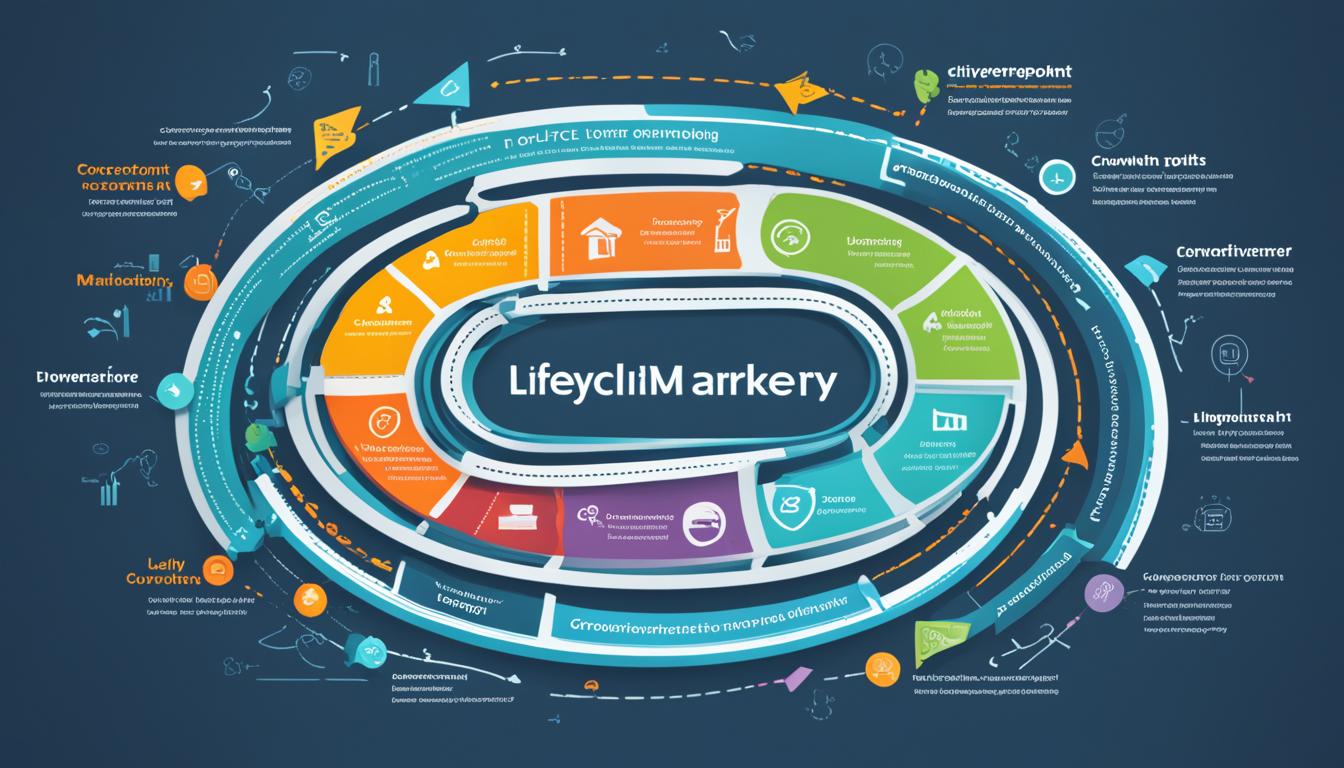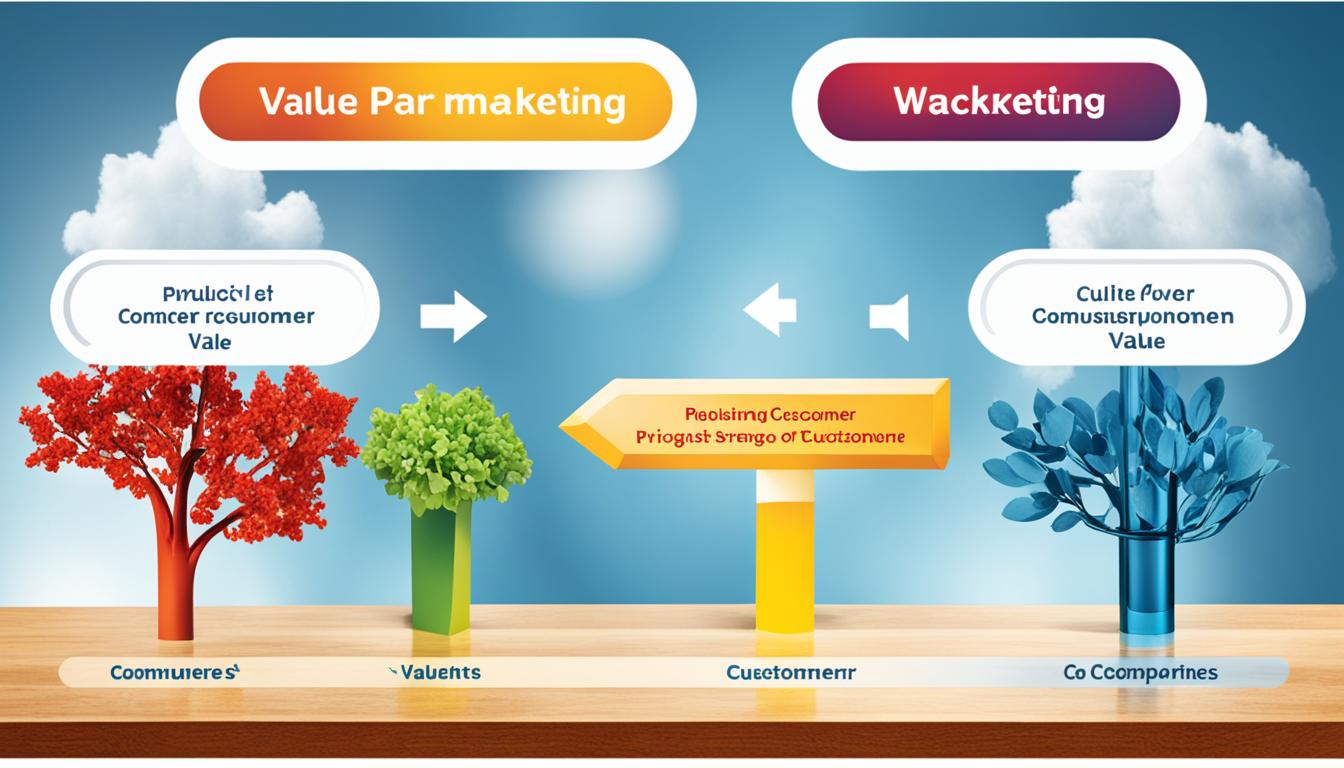Big data is revolutionizing the field of marketing research, providing valuable insights into consumer behavior, preferences, and market trends. With the rise of marketing analytics and data-driven marketing, businesses can now leverage vast amounts of data to gain a deeper understanding of their target audience and make informed decisions.
Marketing research methodologies have evolved with the advent of big data, allowing market researchers to analyze consumer data on a massive scale. By employing advanced techniques such as predictive modeling and trend analysis, businesses can uncover patterns and correlations that were previously inaccessible.
Market segmentation and customer behavior analysis are now more precise and detailed, allowing companies to tailor their products and services to meet the specific needs and preferences of their target market. This level of understanding leads to more effective marketing strategies and improved customer experiences.
One of the key advantages of big data in marketing research is the ability to track consumer behavior in real-time. This means that businesses can gather insights into consumer trends, preferences, and purchasing habits as they happen, allowing for timely decision-making and responsiveness to market changes.
Overall, big data has transformed the way marketing research is conducted, providing businesses with a wealth of consumer insights that were previously unimaginable. By harnessing the power of big data, businesses can stay ahead of the competition and drive growth in today’s data-driven marketplace.
Key Takeaways:
- Big data enables businesses to gain valuable consumer insights and make informed decisions.
- Marketing research methodologies have evolved with the rise of big data, allowing for more precise market segmentation and customer behavior analysis.
- Real-time tracking of consumer behavior with big data provides timely insights for decision-making.
- Predictive modeling and trend analysis help uncover patterns and correlations that drive marketing strategies.
- Big data is transforming the field of marketing research, providing businesses with a competitive edge in the data-driven marketplace.
The History of Big Data
The term “big data” was first popularized in the late 1990s and early 2000s, but the concept of handling large amounts of data dates back much earlier. The history of big data can be traced back to the early stages of computing when the focus was on developing techniques for managing and processing large datasets. Over the years, big data technologies and methodologies have evolved, driven by advancements in technology and the increasing amount of data generated. Today, big data plays a crucial role in various industries, including marketing research.
Big data has a rich and fascinating history. It all began with the need to handle and process large datasets efficiently. Let’s take a closer look at the timeline of big data:
- 1950s-1960s: The early stages of database management systems, with the development of hierarchical and network models for data management.
- 1970s: The introduction of the relational database model, which revolutionized data storage and retrieval.
- 1980s: The emergence of data warehousing and the use of decision support systems for business analytics.
- 1990s: The growth of the internet and the explosion of digital data, leading to the need for more advanced data processing and analysis techniques.
- Late 1990s-early 2000s: The term “big data” gains popularity as companies and researchers grapple with the challenges posed by massive datasets.
- 2000s-present: The development of new technologies, such as Hadoop and Apache Spark, that enable the storage, processing, and analysis of big data in distributed computing environments.
Today, big data is an integral part of businesses and organizations across various industries. Its applications in marketing research provide valuable insights and enable data-driven decision-making.
The Future of Big Data
As the digital landscape continues to evolve, the future of big data looks promising. The demand for big data solutions is expected to grow exponentially as brands recognize the importance of leveraging data to drive informed decision-making. In this section, we will explore the key trends and factors that will shape the future of big data, ensuring that businesses stay ahead in the competitive market.
Growth of Data
The growth of data is relentless, with the amount of information being generated increasing at an unprecedented rate. As more devices become connected and technologies like the Internet of Things (IoT) gain momentum, the volume, variety, and velocity of data will continue to expand. This exponential growth presents both challenges and opportunities for businesses. They must develop strategies to capture, store, and analyze vast amounts of data effectively, enabling them to extract actionable insights and gain a competitive edge in the market.
Wider Adoption of Cloud Computing
Cloud computing has become a fundamental component of the big data ecosystem. Its scalability, flexibility, and cost-efficiency make it the ideal platform for handling large datasets. Organizations are increasingly leveraging cloud-based solutions to store and process big data, eliminating the need for expensive on-premises infrastructure. The widespread adoption of cloud computing will further accelerate the growth and accessibility of big data, empowering businesses to become more data-driven in their decision-making processes.
Increased Focus on Data Privacy
While big data provides immense opportunities, privacy concerns surrounding consumer data have become a critical issue. Governments and regulatory bodies worldwide have implemented stringent data protection laws (e.g., GDPR) to ensure the responsible use and management of personal information. As a result, organizations must prioritize data privacy and compliance, implementing robust security measures and transparency practices to build trust with their customers. By prioritizing data privacy, businesses can navigate the evolving regulatory landscape while continuing to harness the power of big data.
Advances in Artificial Intelligence and Machine Learning
Artificial intelligence (AI) and machine learning (ML) technologies are revolutionizing the way businesses extract insights from big data. These advanced analytical techniques can uncover complex patterns and correlations, enabling businesses to gain a deeper understanding of consumer behavior, forecast trends, and optimize decision-making processes. As AI and ML continue to evolve, their integration with big data will unlock new possibilities for businesses in marketing research and other areas, driving innovation and growth.
Expansion into New Industries
While big data has traditionally been associated with technology-focused industries, its application is expanding beyond these sectors. Healthcare, finance, manufacturing, and retail are just a few examples of industries that are increasingly leveraging big data to drive operational efficiency, improve customer experiences, and create innovative products and services. As more industries recognize the value of big data, its reach will continue to expand, reshaping business processes and strategies across various sectors.
How Big Data is Changing Market Research
Big data is revolutionizing the field of market research, transforming the way insights are gathered and analyzed. Its impact is far-reaching, enabling market researchers to delve deeper into consumer behavior and preferences like never before. Let’s explore the various ways in which big data is changing market research.
1. Insights at an Unprecedented Scale: With big data, market researchers have access to vast quantities of data that provide valuable insights into consumer behavior. By tracking consumer interactions across multiple touchpoints, such as online and offline behaviors, social media interactions, and purchase history, researchers can gain a comprehensive understanding of consumer preferences.
2. More Accurate and In-Depth Insights: Traditional market research methods often struggle to capture a complete picture of consumer behavior due to limitations in sample sizes and data collection methods. Big data, on the other hand, provides a larger and more diverse dataset for analysis. This enables market researchers to gain more accurate and in-depth insights into consumer behavior and preferences.
3. Real-Time Research: One of the key benefits of big data is its ability to provide insights into consumer behavior as it happens. Traditional market research methods may involve delays in data collection and analysis, making it challenging to respond promptly to changes in the market. Big data allows for real-time research, enabling businesses to make data-driven decisions quickly.
4. Advanced Analytical Techniques: Big data opens up new possibilities for advanced analytics in market research. By leveraging machine learning and artificial intelligence, market researchers can uncover hidden patterns, relationships, and predictive insights from large datasets. These advanced techniques help businesses gain deeper insights into consumer behavior and preferences, empowering them to tailor their products and services to meet the evolving needs of their target market.
Overall, big data is transforming market research by providing unprecedented access to consumer insights, enabling real-time decision-making, and facilitating the use of advanced analytical techniques. Businesses that embrace big data in their market research efforts are poised to gain a competitive edge in understanding and serving their customers.
The Benefits of Big Data in Marketing Research
Utilizing big data in marketing research offers numerous advantages for businesses. The ability to gather and analyze vast amounts of data provides a more comprehensive understanding of consumer behavior and preferences. Let’s explore the key benefits of using big data in marketing research:
1. Enhanced Insights with Vast Amounts of Data
Big data allows market researchers to access and analyze massive datasets, providing a more complete and detailed view of consumer behavior. With traditional methods, researchers were limited in the amount of data they could gather and analyze. Big data opens up new avenues for exploration, enabling businesses to make data-driven decisions based on a wider range of information.
2. Real-time Insights for Agile Decision-making
In today’s fast-paced business environment, real-time insights are invaluable. Big data enables companies to monitor and analyze consumer behavior in real-time, keeping them informed of changing market dynamics. With this up-to-the-minute information, businesses are better equipped to adjust their marketing strategies, respond to emerging trends, and optimize their campaigns.
3. Accurate Understanding of Consumer Behavior
Big data offers a more accurate view of consumer behavior and preferences compared to traditional methods. By analyzing large datasets, businesses can identify patterns, trends, and correlations to gain a deeper understanding of their target audience. This enables the development of more targeted marketing campaigns and personalized experiences that resonate with consumers.
4. Leveraging Advanced Analytical Techniques
Big data opens the door to the use of advanced analytical techniques, such as machine learning and artificial intelligence, in marketing research. These techniques allow businesses to extract valuable insights from complex datasets, uncover hidden patterns, and predict consumer behavior. By harnessing the power of advanced analytics, companies can gain a competitive edge, optimize their marketing strategies, and stay ahead of the curve.
Comparing the Benefits of Big Data in Marketing Research
| Benefits | Description |
|---|---|
| Enhanced Insights | Access to vast amounts of data leads to more comprehensive insights into consumer behavior. |
| Real-time Insights | Ability to monitor consumer behavior in real-time allows for agile decision-making. |
| Accurate Understanding | Big data provides a more accurate view of consumer behavior and preferences. |
| Leveraging Advanced Techniques | The use of advanced analytics techniques enables deeper insights and predictive modeling. |
By harnessing the benefits of big data in marketing research, businesses can gain a competitive advantage, fuel innovation, and drive growth in today’s data-driven marketplace.
The Power of Predictive Analytics
Predictive analytics is a powerful tool that utilizes big data to drive insights in marketing research. By leveraging statistical models, machine learning algorithms, and other techniques, predictive analytics enables the analysis of large and complex datasets to forecast future events or trends. In the realm of market research, predictive analytics plays a crucial role in understanding consumer behavior, preferences, and the effectiveness of marketing strategies.
Through predictive analytics, businesses can gain valuable insights into consumer behavior and preferences, allowing them to tailor their products, marketing campaigns, and overall customer experiences to meet the evolving needs of their target market. By analyzing vast amounts of customer data, including online and offline behaviors, social media interactions, and purchase history, predictive analytics can provide accurate forecasts for consumer behavior and preferences.
Predictive analytics is particularly valuable in predicting the success of marketing campaigns and product launches. By analyzing historical data, businesses can identify patterns and make data-driven decisions to optimize their marketing efforts, ensuring maximum impact and return on investment.
Another key advantage of predictive analytics is staying ahead of the competition. By utilizing predictive modeling and advanced analytics techniques, businesses can gain a competitive edge by understanding customer trends, identifying emerging market opportunities, and proactively adapting their strategies to meet changing consumer needs.
To illustrate the power of predictive analytics, consider the case of Company X. By analyzing massive amounts of customer data using predictive modeling, Company X was able to identify key trends and preferences that helped them develop and launch a highly successful new product. This product, tailored to the specific needs and desires of their target market, quickly gained market share and drove substantial revenue growth.
Benefits of Predictive Analytics in Marketing Research:
- Accurate forecast of consumer behavior and preferences
- Identification of market opportunities
- Optimization of marketing campaigns and product launches
- Proactive decision-making for staying ahead of competitors
With the power of predictive analytics, businesses can transform raw big data into actionable insights that drive strategic decisions and fuel success in the dynamic world of marketing research.
| Company | Product | Market Share | Revenue Growth |
|---|---|---|---|
| Company X | New Product | 25% | 50% |
The Challenges of Big Data in Marketing Research
Despite the many benefits of big data in market research, there are several challenges associated with its use. Market researchers face these challenges when utilizing big data to gain insights into consumer behavior, preferences, and market trends. It is essential to navigate these challenges effectively to ensure accurate analysis and informed decision-making.
1. Advanced Data Management Systems
One of the main challenges in leveraging big data for market research is the need for advanced data management systems. The sheer volume and variety of big data require robust infrastructure and technologies to handle its storage, processing, and analysis. Implementing and managing these systems can be complex and require specialized expertise.
2. Data Quality and Accuracy
Ensuring data quality and accuracy is crucial in market research. Poor-quality data can lead to incorrect insights and decisions, impacting the overall effectiveness of marketing strategies. Market researchers must employ rigorous data cleansing and validation techniques to enhance the quality and accuracy of the data used for analysis.
3. Integration of Data from Various Sources
Big data is sourced from multiple channels and platforms, often in different formats and structures. Integrating data from various sources can be a significant challenge for organizations. The successful integration of disparate data sets requires data consolidation, transformation, and alignment to ensure a cohesive and comprehensive analysis.
4. Advanced Analytics Tools and Techniques
Effectively utilizing big data in market research relies on the adoption and proficiency of advanced analytics tools and techniques. These tools allow market researchers to extract meaningful insights from the vast amount of data available. However, mastering these tools and techniques can be challenging, requiring specialized skills and expertise.
5. Data Privacy and Security Concerns
When working with big data, ensuring data privacy and security is of paramount importance. Organizations must comply with privacy regulations and implement robust security measures to protect sensitive consumer information. Maintaining data privacy while harnessing the power of big data poses challenges that must be addressed to build consumer trust and confidence.

Despite these challenges, market researchers recognize the immense value that big data brings to market research. By addressing these challenges through strategic planning, robust infrastructure, data quality control, and adherence to privacy and security measures, market researchers can harness the power of big data to gain valuable insights and stay ahead in a dynamic and competitive market.
Case Studies: Big Data in Market Research
Case studies of big data in marketing research provide tangible evidence of how businesses have successfully leveraged big data to gain valuable insights and drive better results. These success stories demonstrate the transformative impact of big data on decision-making and strategy development.
Optimizing Marketing Strategies
In one case study, a leading e-commerce company utilized big data to optimize its marketing strategies. By analyzing customer data from various sources, including website interactions, purchase history, and social media engagement, the company gained deep insights into consumer behavior and preferences. This enabled them to tailor their marketing campaigns and target specific customer segments more effectively. As a result, they experienced a significant increase in customer engagement, conversions, and overall sales.
Personalizing Customer Experiences
Another case study involved a multinational retail brand that leveraged big data to personalize customer experiences. By analyzing customer data from online and offline touchpoints, such as mobile apps, website interactions, in-store purchases, and loyalty programs, the brand gained a holistic understanding of individual customer preferences. This allowed them to provide personalized recommendations and offers to each customer, enhancing the overall shopping experience and strengthening customer loyalty.
Identifying New Market Opportunities
A global consumer goods company used big data to identify new market opportunities. By analyzing consumer behavior, market trends, and social media sentiment, the company discovered a growing demand for sustainable and eco-friendly products. Armed with this insight, they launched a new line of environmentally friendly products, which quickly gained popularity among environmentally conscious consumers. This successful product launch was directly attributed to the actionable insights derived from big data analysis.
Improving Product Development
A technology company employed big data to improve its product development process. By analyzing customer feedback, product usage data, and market trends, the company gained a deeper understanding of consumer preferences and emerging market needs. This enabled them to prioritize product features and enhancements that resonated most with their target audience. As a result, they achieved higher customer satisfaction, increased market share, and faster product adoption.
These case studies demonstrate the effectiveness of big data in market research and highlight its potential to drive innovation, improve decision-making, and fuel business growth. By leveraging the power of big data, companies can gain a competitive edge in their respective industries and stay ahead of market trends.
Best Practices for Big Data Market Research
Effective big data market research relies on following best practices to ensure accurate insights, comprehensive analysis, and responsive decision-making. By implementing the following tips, businesses can leverage the power of big data to gain a competitive edge in the market:
- Ensure Data Quality: Regularly clean and validate data to maintain accuracy and reliability. Quality data serves as the foundation for robust analysis and meaningful insights, leading to informed decision-making.
- Integrate Data from Various Sources: Combine data from multiple sources, such as customer interactions, social media, and purchase history, to gain a comprehensive understanding of consumer behavior and preferences. Integrated data provides a holistic view for analysis.
- Utilize Advanced Analytics Tools and Techniques: Leverage advanced analytics tools and techniques, such as machine learning and predictive modeling, to uncover hidden patterns and relationships. This enables deeper insights and more accurate predictions, enhancing the effectiveness of market research.
- Promote Cross-Functional Collaboration: Foster collaboration between data scientists and market researchers to maximize the value of big data. By working together, these professionals can combine expertise in analytics and market insights to uncover actionable information.
- Regularly Monitor and Update Research Efforts: Continuously monitor market conditions and update research efforts accordingly. Big data is dynamic, and keeping research strategies up to date ensures relevance and responsiveness to changing consumer trends.
Market Outlook and Future Trends
The global big data market is set for continued growth, with a forecasted compound annual growth rate (CAGR) of 18.91% during the forecast period. This positive market outlook can be attributed to several factors that drive the demand for big data solutions.
- The increasing amount of data generated: As technological advancements continue to unfold, the volume of data being generated is expanding exponentially. This influx of data provides businesses with a wealth of information that can be leveraged for strategic decision-making and market analysis.
- The adoption of cloud computing: The widespread adoption of cloud computing has facilitated the storage and processing of large datasets, enabling organizations to tap into the power of big data without the need for significant infrastructure investments. The scalability and flexibility offered by cloud-based solutions have further fueled the growth of the big data market.
- Advancements in artificial intelligence and machine learning: The development of sophisticated algorithms and machine learning models has enhanced the ability to extract meaningful insights from vast datasets. As businesses increasingly embrace artificial intelligence and machine learning technologies, the demand for big data analytics tools and solutions continues to rise.
- Expansion into new industries: While big data initially gained traction in tech-focused sectors, its relevance has extended to various industries such as finance, healthcare, retail, and manufacturing. This expansion into new sectors further underscores the value and potential of big data in driving innovation and competitive advantage.
Big Data Market Outlook
| Year | Market Size (USD Billion) |
|---|---|
| 2020 | XX |
| 2021 | XX |
| 2022 | XX |
| 2023 | XX |
| 2024 | XX |
| 2025 | XX |
As seen in the table above, the big data market is projected to experience substantial growth in the coming years, reflecting the increasing adoption and utilization of big data analytics across industries.
The future of big data holds immense potential for businesses and researchers alike. With ongoing advancements in technology, the big data landscape is expected to evolve, paving the way for new opportunities and innovative solutions. By harnessing the power of big data, organizations can gain deeper insights into their target markets, enhance decision-making processes, and gain a competitive edge in an increasingly data-driven world.
Conclusion
In conclusion, the advent of big data has transformed the landscape of marketing research, providing businesses with unprecedented insights into consumer behavior, preferences, and market trends. By harnessing the power of big data, businesses can make data-driven decisions, optimize their product development and marketing strategies, and gain a competitive edge in the market.
Leveraging big data in market research requires careful planning and adherence to best practices. It involves implementing advanced data management systems to handle the volume and variety of data, ensuring data quality and accuracy, and addressing data privacy and security concerns.
To effectively utilize big data, market researchers need to embrace advanced analytics tools and techniques, fostering cross-functional collaboration between data scientists and market researchers. Regular monitoring and updating of research efforts are also necessary to adapt to changing market conditions.
Overall, by following best practices and overcoming the challenges associated with big data, businesses can unlock the full potential of big data in marketing research, enabling them to make more informed decisions, better understand their customers, and stay ahead in a rapidly evolving marketplace.
FAQ
What is big data in marketing research?
Big data in marketing research refers to the massive amount of structured and unstructured data generated by various sources that is used to gain valuable insights into consumer behavior, preferences, and market trends.
How is big data used in market research?
Big data is used in market research to analyze consumer data, understand purchasing habits and preferences, make informed decisions about product development and marketing strategies, identify market opportunities and challenges, and assess the effectiveness of marketing campaigns.
What are the benefits of using big data in marketing research?
The benefits of using big data in marketing research include gathering and analyzing vast amounts of data for a more complete understanding of consumer behavior, real-time insights for quick responses to market changes, more accurate views of consumer behavior, and the ability to use advanced analytical techniques for deeper insights.
How does predictive analytics relate to big data in marketing research?
Predictive analytics uses statistical models and machine learning algorithms to analyze large datasets and predict future events or trends. In marketing research, predictive analytics can forecast consumer behavior, predict the success of marketing campaigns, and help businesses make more informed decisions.
What are the challenges associated with using big data in marketing research?
Challenges associated with using big data in marketing research include the need for advanced data management systems, ensuring data quality and accuracy, integrating data from various sources, and addressing data privacy and security concerns.
Can you provide examples of successful use cases of big data in market research?
Examples of successful use cases of big data in market research include optimizing marketing strategies, personalizing customer experiences, identifying new market opportunities, and improving product development based on consumer preferences and trends.
What are the best practices for conducting big data market research?
Best practices for conducting big data market research include ensuring data quality through regular cleaning and validation, integrating data from various sources for comprehensive analysis, using advanced analytics tools and techniques, promoting cross-functional collaboration between data scientists and market researchers, and regularly monitoring and updating research efforts.
What is the market outlook for big data in marketing research?
The global big data market is expected to continue growing, with a forecasted compound annual growth rate (CAGR) of 18.91% during the forecast period. Factors such as the increasing amount of data generated, the adoption of cloud computing, and advancements in artificial intelligence and machine learning contribute to the positive market outlook.
What is the conclusion on the role of big data in marketing research?
Big data has revolutionized marketing research by providing valuable insights into consumer behavior, preferences, and market trends. It enables businesses to make data-driven decisions, improve product development and marketing strategies, and stay ahead of the competition. However, utilizing big data in market research requires careful planning, adherence to best practices, and addressing challenges such as data management and privacy concerns.





